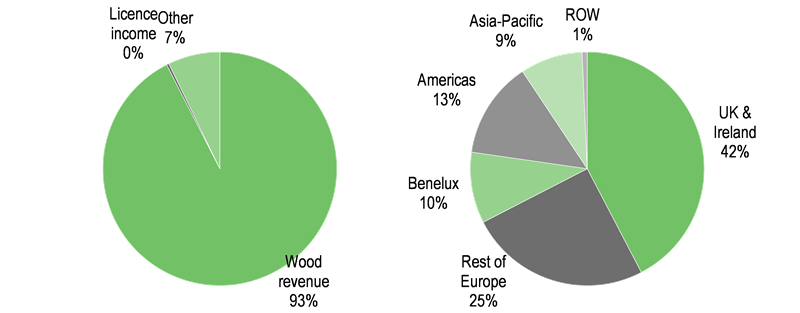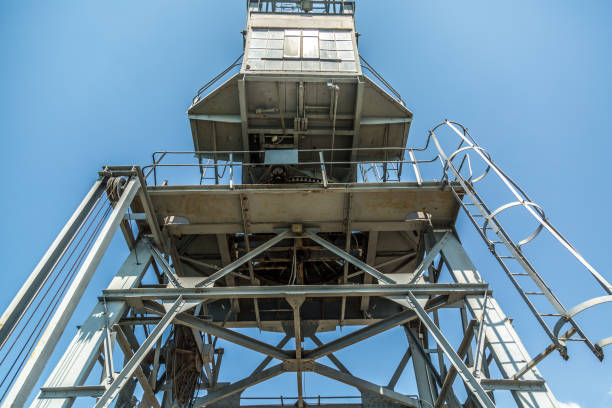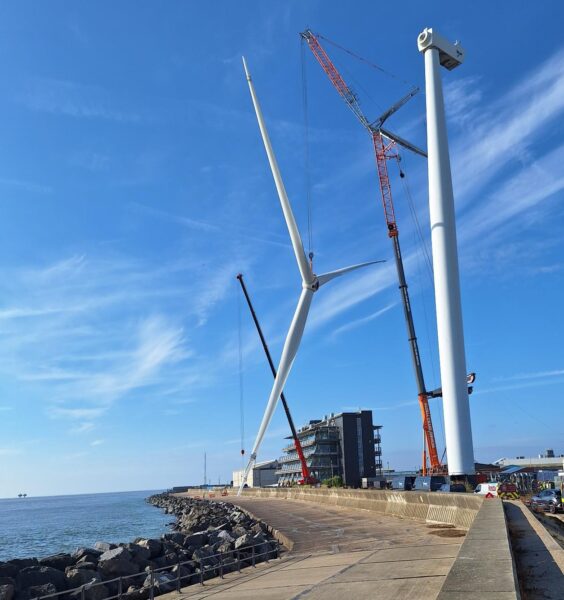Building momentum for the next growth phase
Through careful market cultivation and backed by investment and operational improvements over time, Accsys is well positioned and has a clear expansion strategy for its next phase of growth funded by cash on hand and established finance facilities. In the following sections, we identify two phases in the company’s development to date and discuss the operations as context for the significant current investment programme. We conclude with a look at the market position and prospects.
A: 1999-2009 – from pre-revenue, IP owners to Tricoya launch
A forerunner company was established in 1999 to explore acetylation chemistry technology applications on cellulose materials. Further development and incorporation with other related IP was followed by Titan Wood’s formation in 2003 to specifically pursue wood acetylation, with the company acquiring IP in its own right and a scale pilot plant in that year. When Titan Wood listed on AIM in October 2005, it did so to fund the construction, commissioning and ramp up of its process and wood acetylation production facility in Arnhem. This investment completed in March 2007, with an initial capacity of 30,000m3 per annum. Initial Accoya wood revenues were recorded in FY07 and FY08 but were dwarfed by significant upfront licence income. These payments reduced sharply as the construction of full scale third-party production facilities under licence did not proceed, with the global financial crisis as a backdrop at the time. Accsys continued to develop its market presence through an active phase of establishing overseas sales, marketing and distribution agreements, together with local approvals supported by production at Arnhem. By 2009, nameplate capacity reached 40,000m3 per annum. The other notable achievement in this year was the launch of Tricoya-based panel products in conjunction with partner, Medite. As a result of the stalled licence development referred to earlier, the financial (trading and cash flow) performance deteriorated significantly and precipitated a change in management.
B: 2010-2017 – increased focus on own production
Paul Clegg joined as NED in April 2009 and became CEO later that year. A new executive team and group chairman were in place by the end of 2010. Equity funding rounds in FY10 and FY11 (€17m and €28m net respectively) served to first, stabilise the group financial position and second, put in place sufficient cash resources to develop the business further including increasing capacity at Arnhem. Together, these steps signified an increased emphasis towards in-house production under full control to drive growth. Accoya wood volumes built steadily to FY13 reflecting the increase in sales, distribution and agency agreements and yielded improving production economies of scale, aided by a new supply/technical support agreement with BP Acetyls. Production volumes and revenues accelerated sharply over the following four years and the Arnhem plant effectively operated at its increased, 40,000m3 capacity in FY17 and is profitable as a standalone site. Having launched in FY12, Tricoya/Medite revenues reached €7.8m in FY17, which has formed the foundation to proceed with the new JV structure and standalone Tricoya facility at Hull. A number of other new licence agreements have been progressed to varying degrees, the most significant of which is with Rhodia Acetow (originally as part of Solvay) under which supply commenced in FY17 with a medium-term aim of building a third-party Accoya facility.
We summarise these achievements from FY11 to FY17 in financial terms as follows:
■
Product revenue increased from €13.6m to €50.7m (originally reported as manufacturing and subsequently wood sales).
■
Group gross margin transformed from modestly negative to c 34% in FY16, settling back at c 25% in FY17 (reflecting revenue mix and business development-led customer effects).
■
Group EBITDA approaching break-even (ie loss narrowing from -€12m to -€1.5m in FY17).
We illustrate the operational growth of the business in Exhibit 7, which shows the increase in wood volumes (both solid Accoya wood and solid Accoya wood used by Medite, which is chipped into elements for Tricoya products), increased plant utilisation at Arnhem and the associated revenue generated from wood sales.
Exhibit 7: Wood volumes and revenue growth
|
Exhibit 8: Accsys Technologies group revenues
|

|

|
|
|
Source: Company. Note: Includes wood, licence and other income.
|
Exhibit 7: Wood volumes and revenue growth
|

|
|
|
Exhibit 8: Accsys Technologies group revenues
|

|
Source: Company. Note: Includes wood, licence and other income.
|
Exhibit 8 above shows the development of group (including non-wood) revenues and the geographic spread of where that income was generated. Accoya has wide market acceptance within and outside European markets. At the end of FY18, Accsys had 64 Accoya distributor, supply and agency agreements in place and coverage territory includes North America, much of Europe and south-East Asia together with Australasia and selected countries on the South American (Brazil, Chile) and African (Morocco, South Africa) continents. This includes a handful of Accoya licensees: terms typically include defined, exclusive sales territories, sales and marketing support, volume supply agreements and usually a finite length of time to build a self-operated facility which then generates royalty flows back to Accsys. The most significant current Accoya licensee is:
■
Rhodia Acetow (territory amended to certain Council of Europe countries while excluding the UK, Republic of Ireland and Benelux): Original licence – with the then Solvay-Rhodia – became effective in December 2013 for a minimum 15-year exclusive period. This was amended in October 2015, to include:
•
Minimum 76,000m3 offtake of Accoya wood 2016-2020
•
Partial funding (through loans and fees) for the expansion of production facilities at Arnhem up to 80,000m3
•
Reduced regional exclusivity and review of timing for the licensee’s own plant construction
There are examples of licence agreements signed under previous management teams that have not progressed to the licensee’s plant construction stage, but they remain group customers, albeit at relatively low volumes. These include Diamond Wood (China, ASEAN countries) and Al Rajhi Holdings (Gulf Cooperation Council countries). The current Accsys management team’s preference is to be a co-owner in future production-based licence agreements as at the Hull facility.
Medite Europe (part of Coillte Panel Products) was the first Tricoya licensee, having exclusivity in the UK, Republic of Ireland and the Netherlands. Following a joint development agreement, the first Tricoya MDF panel products were sold in 2011. An extended licence agreement (July 2013) included provision for a dedicated Tricoya manufacturing facility. The subsequent formation of a new Tricoya consortium includes Medite’s involvement as a co-investor in both TTL and TVUK with a minimum 40% volume offtake from the new Hull facility once it is operational. Most recently, FINSA (an established private European MDF and chipboard manufacturer) signed a user licence agreement on 16 March 2018 with exclusive rights to manufacture high-performance, wood-based panels from Tricoya in Spain and Portugal (with non-exclusive distribution rights in other territories).
C: FY18 – investment for growth
FY17 was a watershed year for Accsys as having achieved full Accoya production run rates, foundations were put in place – including secure funding – for its next phase of expansion. Ongoing market development and volume growth is a clear strategic objective and we are able to frame the scale of medium-term management aspirations in the context of the significant investment at Arnhem (to increase Accoya capacity) and underway at Hull (to build a standalone Tricoya plant).
We now provide an operational overview of these facilities noting similarities and differences. We understand that the basic acetylation chemistry is common to both Accoya and Tricoya processes; wood reacts with acetic anhydride under controlled heat and pressure cycles to change naturally occurring free hydroxyl groups – which absorb and release water – into an acetyl group, producing acetic acid as a by-product. Exhibit 9 illustrates the Accoya production process, simply described as solid soft wood fed into an acetylation reactor vessel to produce enhanced-property Accoya wood.
Exhibit 9: Accsys Technologies – Accoya production process
|

|
|
|
The first Tricoya facility is under construction; note the following process differences to Accoya:
Exhibit 10: Process differences between Tricoya and Accoya
Arnhem (Accoya) |
Hull (Tricoya) |
■
Batch production using solid wood
|
■
Continuous process using wood elements
|
■
Horizontal reactor vessel - end fed
|
■
Vertical reactor vessel – top fed
|
■
2x vessels operational (20,000m3 each)
|
■
Under construction (40,000m3 /30,000 tonnes)
|
■
Expansion: Third reactor (+20,000m3) now operational.
Chemical backbone infrastructure in place for fourth reactor. |
■
Expansion: No plans announced but space available
|
Arnhem (Accoya) |
■
Batch production using solid wood
|
■
Horizontal reactor vessel - end fed
|
■
2x vessels operational (20,000m3 each)
|
■
Expansion: Third reactor (+20,000m3) now operational.
Chemical backbone infrastructure in place for fourth reactor. |
Hull (Tricoya) |
■
Continuous process using wood elements
|
■
Vertical reactor vessel – top fed
|
■
Under construction (40,000m3 /30,000 tonnes)
|
■
Expansion: No plans announced but space available
|
Capacity investment to support medium-term volume growth
The sizeable capital cost of these facilities together with the accumulated know-how (ie patent protected process and equipment IP developed over an extended period) represent significant barriers to entry into this modified wood market in our view. The patent position is enforced globally – the use of territory licence agreements is a tangible example of this. Together with an established supply chain (including co-invested partners) and extensive international distribution relationships in place, we believe that Accsys is well positioned to capitalise on its market position by scaling up capacity and achieving sustainable profitability.
Engie Fabricom is the engineering, procurement and construction (EPC) contractor for both the Arnhem expansion and the new facility in Hull (having also undertaken the front-end engineering and design for the latter facility). Engie Fabricon is an integrated design through to construction and commissioning engineering contractor with extensive experience in process industries including chemicals. We summarise expected developments at the two Accsys sites, as follows:
Arnhem: installation of the third reactor vessel and ancillary equipment (including the backbone infrastructure for a fourth reactor) began in H216 and was commissioned into production in June 2018. It is expected to be operating at full run rate capacity by the end of FY19.
Hull: Located at Saltend Chemicals Park on a site adjacent to JV partner BP Acetyls’ facility, groundworks began in July 2017 and we understand that structural steelwork activity has begun and the reactor vessel has been ordered. Full commissioning and the start of commercial production is anticipated by mid-2019 and we expect Accsys to report on construction milestones as the project progresses.
Accsys capacity and volume development – a dynamic view
Arnhem reactor three coming into service represents a 50% increase in Accoya wood capacity (from 40,000m3 to 60,000m3), alleviating allocation pressure – given that Arnhem has been operating at capacity – and allowing for volume growth to re-start. (While the same or possibly better gross margin characteristics should apply to the incremental volume, opex should be relatively stable and so it would be reasonable to expect some EBIT margin improvement at Arnhem.)
For illustration, assuming that Hull is in service at the beginning of FY20 and all of the Medite Tricoya volume (FY17 c 8,300m3, say increased to 10,000m3 by that time) is transferred to Hull, this has two effects with positive margin implications:
•
Hull: begins operation with an initial volume baseload utilisation of c 25% of the new facility from day one with an existing Tricoya customer and another (FINSA) to build up also.
•
Arnhem: In effect, plant investment almost doubles available Accoya capacity (from c 30,000m3 to 60,000m3), being an initial +20,000m3 from reactor 3 for FY19, then + c 10,000 from the movement of Medite chip production to Hull in FY20.
Having been capacity constrained for the last two years, Arnhem now has a significant opportunity to capitalise on its extensively developed distribution network and to provide strong support to existing and prospective new licensees in helping to grow their markets. From an investor’s perspective, there is a clear and visible growth trajectory from an established base. Moreover, within this timescale, Accsys has the option to add a fourth Accoya reactor at Arnhem (a further 20,000m3). There is understood to be an 18-24 month development-to-commissioning cycle for this and conceivably a decision to proceed could be taken within our estimate time horizon. Overall demand levels for Accoya will be central to the business case to further expand Arnhem taken in the context of an expected shift of volume to Hull in 2019.
Market aspirations, applications, characteristics and challenges
As stated in the March 2017 Placing and Open Offer prospectus, management’s assessments of long-term achievable scale are as follows:
■
1 million m3 pa of Accoya wood against a current global solid wood market estimated to be in excess of 400 million m3
■
1.6 million+ m3 of Tricoya panel products, thought to be c 1.5% of existing global MDF manufacturing capacity
Tertiary and higher-specification sector penetration: The market sizes indicated will include segments that are not being addressed (eg interior millwork) but we believe relevant exterior and other applications are also material markets. Accsys has grown wood revenues from below €10m in FY10 to c €51m in FY17, achieving profit on a local but not yet group basis. Supplying to a wide range of projects internationally has showcased the versatility of its modified wood. End-market segments include retail, offices and leisure (eg hotels, marine, velodromes) where cladding and decking uses dominate and public spaces (eg bridges, art installations, boardwalks) with other functional and structural requirements. We believe that tertiary projects have been significant drivers of volume. There has also been higher-specification private residential newbuild (including apartments) and other restoration work, including windows and doors. Market penetration has been largely gained through specialist channels (eg specifiers, architects) and growth largely driven by repeat business. The broad Accsys distribution network already facilitates project activity; it is likely to require increasing support (eg local stock availability) in key territories for the next growth phase.
Scaling up – a multi-market, multi-channel perspective: The prospective Accoya and Tricoya capacities referred to earlier (ie 80,000m3 and 40,000m3 respectively) offer excellent medium-term volume growth from the current base. At the same time, they are clearly insufficient to deliver management’s indicated long-term volume aspirations. We expect Accsys to retain a premium positioning for its modified wood and – while unlikely to develop mass-market usage in the near term (eg retail) – we offer some growth perspectives for investors to consider.
Deeper entry into timber window and door markets (and roofline, weatherboarding etc) would enhance the company’s presence in both newbuild and secondary residential sub segments. Noting multiple and fragmented routes to market (eg merchants, fabricators, installers, specifiers, contractors) this clearly broadens supply chain servicing requirements. Consequently, Accsys will need to cultivate these channels and also maintain a significant end customer profile to pull through product demand. Increased capacity will facilitate increased demand and channel requirements and also lower unit production costs to open up more segments. Sustainability agendas are becoming increasingly important, especially in developed building markets, which are typically regional and served locally. Climactic conditions also influence markets with different material preferences (eg between timber, plastic and metal-based products) across both European countries and US states, for example. We believe that Accsys’s modified wood is capable of being deployed in a wide range of environments and applications and the range of market opportunities is broad. With finite near-term capacity available, it would be reasonable to expect Accsys to pursue a selective expansion strategy in developing these markets rather than one which is purely volume-driven.
In the medium to longer term, in order to supply 1 million+ m3 pa of (either Accoya or Tricoya) material, it is clear that a significant scaling up of facilities is required, which could be achieved directly or, more likely we feel, through international partnerships involving co-investment and the construction of new plants, which bring the added benefit of reducing transport costs in non-European markets. Announcements of significant new partners – and associated investment would represent potentially significant markers of progress towards longer-term, higher volume targets. Accsys has noted interest in developing new capacity in North America and Asia and discussions regarding potential licence arrangements with a number of large MDF manufacturers are underway.























